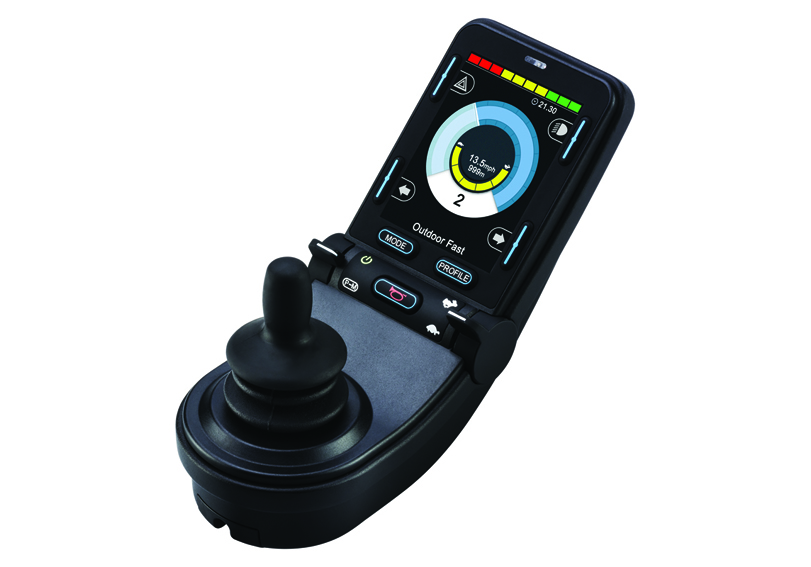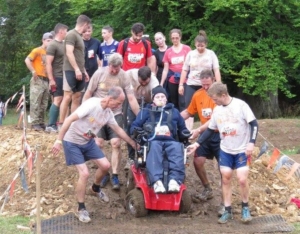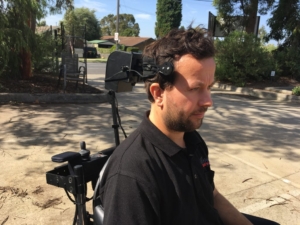Tennessee State Parks’ commitment to inclusive access
Thanks to Tennessee State Parks’ commitment to inclusive ...
Read MoreHaving the right wheelchair controls open up a world of opportunity for how we can use and control our powerchair. We all have different capabilities, so it’s important that our wheelchair controls ensure we’re getting the most out of our powerchair.
From proportional controls to non-proportional switch controls or combinations of both, we’re talking you through the options available to help you customise the right solution.
Types of controls
Proportional controls allow you to move in any direction in response to the movement of the controller. A joystick is the most common example of this, where the power wheelchair will move in any direction in response to the way that the joystick is moved.
Non-proportional controls are pre-programmed, so require less coordination and motor control, but open up a world of opportunity to plug in different specialty controls including traditional head arrays, switches and a sip/puff option to keep you in control.
Joysticks are the most common proportional control and can come in a variety of sizes and configurations. A joystick will guide the powerchair in the direction that it is pushed. The further the joystick is pushed, the faster the power wheelchair will go. Releasing the joystick automatically applies the brakes and stops the wheelchair.

Magic Mobility wheelchairs use Penny & Giles R-net joysticks including CJSM 2 (larger LCD screen with or without integrated Bluetooth) or the JSM controller (smaller LCD or LED screen options and less expensive).
They can be positioned within reach of the powerchair user, most commonly at the end of the user’s dominant armrest, or behind the seat for an attendant. Joysticks can be fitted with a range of brackets for easy removal or repositioning, including swing back, drop down, and quick release options.
Joysticks can also be modified to each user’s range of accessibility. This includes alternative knobs, balls or handles.

Rob uses a chin control to complete Tough Mudder.
A range of alternative controls for joysticks are available, including chin, forearm and foot controls. Similarly to the head control, these alternatives have accessible configurations that translate the movement into directions for the wheelchair. Our team can help to tailor a control to your range of motion and accessibility.
Switch controls are pre-programmed to a range of specific settings. In this instance, when a switch is activated the powerchair will move, and when it is no longer engaged the wheelchair will stop. In some cases, multiple switches can be activated simultaneously. For example, the user might compress the ‘forward’ switch, and then the ‘left’ switch, to veer forward to the left.
Switch controls can be more accessible than a joystick, and can be customised for a specific speed, direction and rate of acceleration and deceleration. They also enable different control devices such as head arrays, scanners, buttons and sip and puff to enable driving and power function activation.
When specialty controls are required, Magic Mobility wheelchairs use the Penny & Giles R-net Omni 2 switch controller. This is the next generation controller which integrates Bluetooth and a USB charging socket in addition to a new look, streamlined LCD screen.

A Head Control will direct the power wheelchair based on head movements.
Head control units are specially configured to drive a power wheelchair using a joystick mounted behind the wheelchair user’s head. The user has a specific headrest that converts their head movement into the required direction for the powerchair. For example, when the headrest is pushed left, the wheelchair will move in that direction. Similar to the conventional joystick, the harder the headrest is pushed, the faster the wheelchair will go. In this instance, a simple switch is used to select the backward motion into either forward or reverse motion of the wheelchair.
A sip/puff control is another example of a switch control, activated by sipping (inhaling) or puffing (exhaling) on a wand. The controls are calibrated to each user’s breathing abilities, and typically have four different inputs: a hard puff, soft puff, hard sip and soft sip.
Our team can work with you to tailor a control to your needs and accessibility.
Are you interested in finding out more about a wheelchair control? Contact us today to find out more.
Thanks to Tennessee State Parks’ commitment to inclusive ...
Read MoreBe it in summer or winter, two new Extreme X8 users share ...
Read MoreOur award-winning Magic 360 is now available in the USA and ...
Read MoreThis website uses cookies to ensure you get best experience on our website.